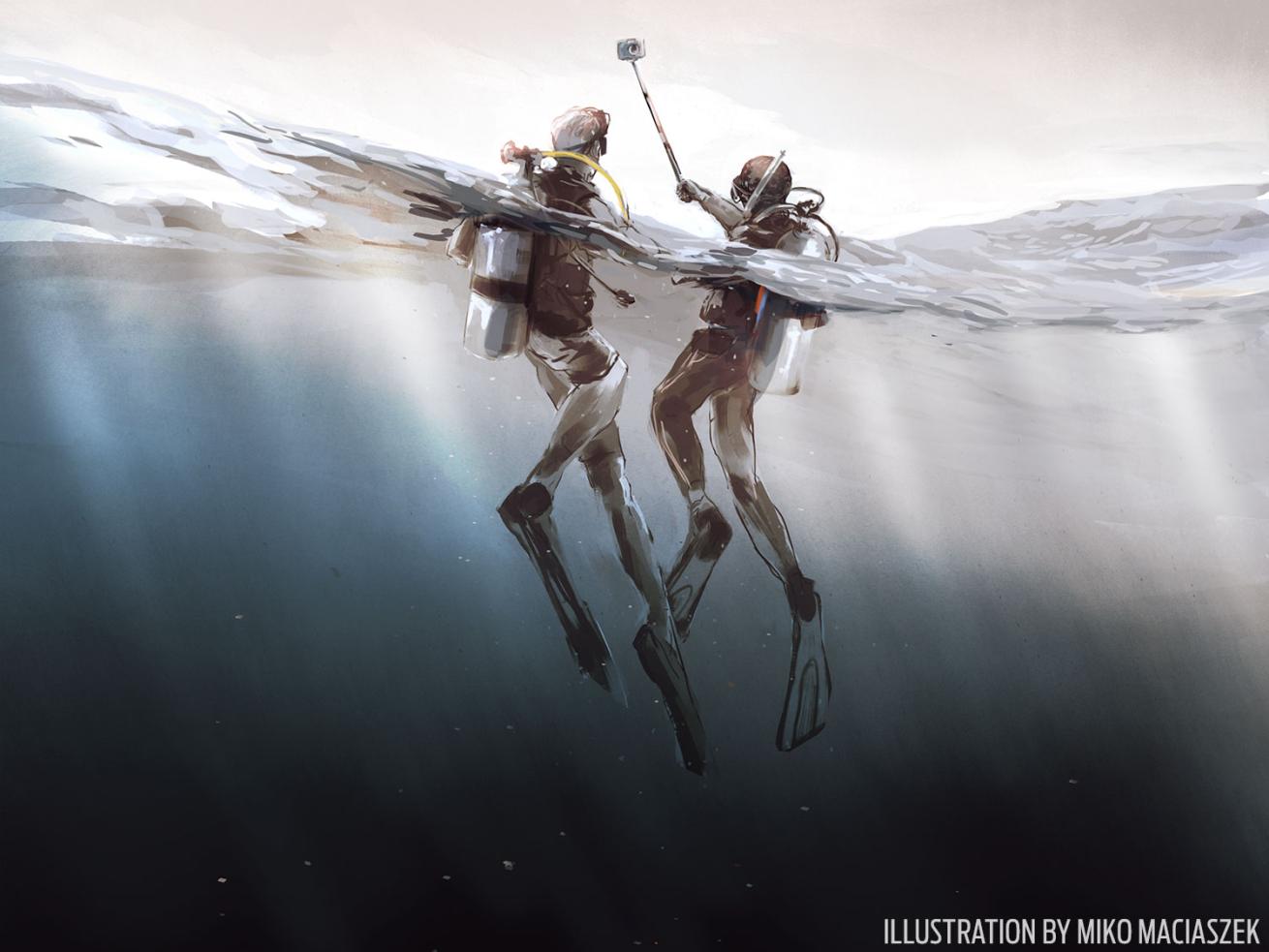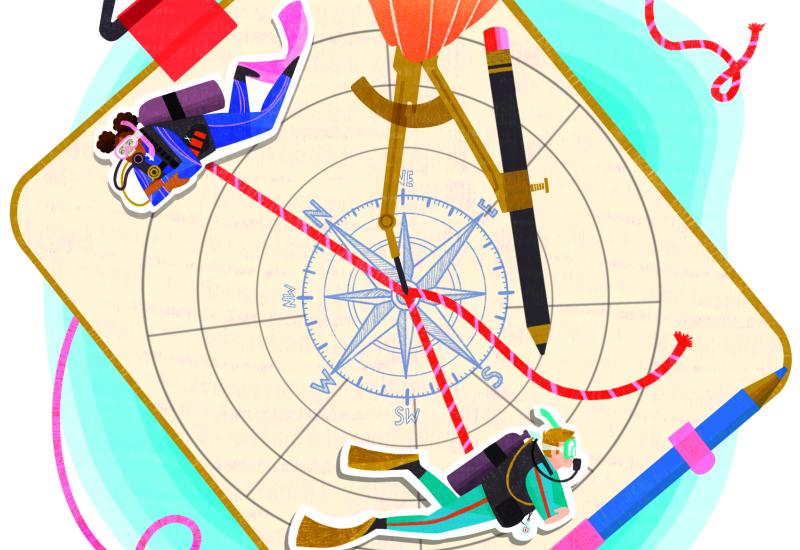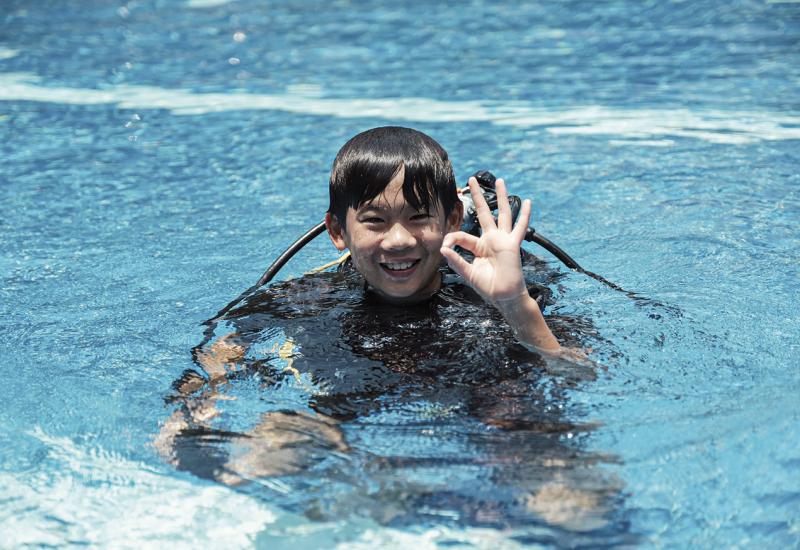When Underwater Selfies Go Wrong - Lessons for Life

Miko MaciaszekLESSONS FOR LIFE
Ignoring basic safety procedures for the sake of a selfie costs one scuba diver their life.
SAVE YOUR SELFIE
Bill had lost sight of his dive buddy, but he wasn’t worried about it. He had finally reached the cargo hold of the wreck they were diving, and he was stoked to take a selfie to prove he had been there. Bill knew of only one other person who had been in that part of the wreck, and that diver was a legend. Bill wanted to be a legend too. He got the photo, but there was one problem: He wasn’t sure how to get back to the surface.
THE DIVER
At age 33, Bill had been certified for a decade and tried to go diving a couple of times a year. He hadn’t taken any advanced training courses, but he constantly read articles about diving and explorations. He dreamed of diving alongside those adventurers and was certain he could earn his spot on an expedition by proving he had “been there, done that.” He was in generally good health.
THE DIVE
The morning dawned cloudy and cool with light seas, but the charter boat was stable enough to handle the waves. It took a little more than an hour to reach the dive site, and Bill and his buddy, Tony, were the first team geared up and ready to enter the water when the boat crew gave them the go-ahead. The wreck rested in 120 feet of water, but Bill and Tony had no intention of descending all the way to the sand. They planned to penetrate the wreck from an opening on the main deck and make their way into the famed interior cargo hold. For them, it was like reaching Mount Everest. They were going to have to move quickly. They were both using a standard recreational diving setup, with a single aluminum 80-cubic-foot tank each. Because of the limited bottom time, they planned to get in, take their selfies, and head back to the surface.
THE ACCIDENT
The dive began with no problems. After a brief buddy check, Bill and Tony descended quickly along the anchor chain, doing their best to control their breathing. They wanted to conserve their air so they had enough time to get their photos and return to the surface. They reached the wreck and quickly found the entrance to the inside passage that would lead them to the cargo hold. With a final OK, they took off inside the wreck. Bill was in the lead. Within moments, Tony lost sight of Bill. Tony had stopped to look down a passageway for a moment, and when he looked back, Bill was gone. Tony searched around for a few minutes, but he wasn’t willing to explore the wreck on his own, so he turned around and made his way back out of the ship. He waited several minutes near the passageway for Bill, and then made his ascent. Tony kept an eye on his watch at the surface. When Bill hadn’t ascended within the time they had planned, Tony alerted the captain that there might be a problem. Recovery divers were called in to help search for Bill. They finally found his body in the cargo hold. His tank was empty.
ANALYSIS
Bill’s official cause of death was drowning due to insufficient air, but the cause of the accident started several steps earlier, before the divers ever got in the water. Bill and Tony’s first mistake was planning a penetration dive without sufficient breathing gas to do so. A basic rule of planning a dive like this is to use the Rule of Thirds: One third of your air is for the penetration; the second third is for your exit; the final third is held in reserve in case there is a problem. In a typical 3,000 psi scuba cylinder, that means turning a dive when the submersible pressure gauge reads 2,000 psi — at a minimum.
The second mistake was neglecting to use any sort of line to help them find their way back out of the ship. Neither diver had any formal training in wreck penetration or entering overhead environments. Even though Bill read avidly about diving adventures, he didn’t know to leave a clear path to guide him out of the ship the same way he entered.
The third mistake was not aborting the dive when they became separated inside the wreck. Basic open water divers know that when buddies become separated, they should search for no more than a minute and then safely head to the surface to reunite. If it’s not practical to resume the dive after reconnecting because of time or depth, then it’s time to call the dive.
We’ll never know why Bill didn’t abort the dive when he realized Tony wasn’t following him any longer. However, it is easy to imagine that Bill was so focused on his goal and getting a selfie that he didn’t even consider going to look for his buddy. Getting the photo was his primary concern.
There are those who could safely make this dive without a buddy, but those people have specialized training in solo diving techniques and carry along additional air to successfully complete the dive. Even if they were with a buddy, those divers would also have had a plan in the event that they became separated underwater. Bill and Tony were not these divers.
Any time a goal becomes so important that you are willing to put aside accepted safety procedures and techniques — or it makes you unwilling to back off and try again later — you put yourself and your buddy at risk.
LESSONS FOR LIFE
1 Plan Accordingly Plan for the dive you are doing, or make a dive you are prepared for. Entering an overhead environment without the proper equipment is a great way to get in trouble.
2 Learn the Skills Seek out the required training for diving in overhead environments before you attempt a penetration.
3 Use A Safety Line Any time you are making a penetration dive, use a safety line attached to the outside so you can easily find your way out.
4 Mind Your Buddy Agree with your buddy on a course of action should you become separated. Typically, that means searching on the bottom for a minute, and then making a controlled ascent to meet at the surface.
5 Ignore Your Ego Don’t let aspirations of greatness cause you to take unnecessary risks. You can always make another attempt — as long as you survive the first one.
About Lessons For Life
We're often asked if the Lessons for Life columns are based on real-life events. The answer is yes, they are. The names and locations have been removed or altered to protect identities, but these stories are meant to teach you who to handle a scuba diving emergency by learning from the mistakes other divers have made. Author Eric Douglas takes creative license for the story, but the events and, often, the communication between divers before the accident are entirely based on incident reports.
READ MORE LESSONS FOR LIFE ARTICLES AND LIVE TO DIVE ANOTHER DAY
Eric Douglas co-authored the book Scuba Diving Safety, and has written a series of adventure novels, children’s books, and short stories — all with an ocean and scuba-diving theme. Check out his website at booksbyeric.com.










